- Clone
- 13H3A44 (See other available formats)
- Regulatory Status
- RUO
- Other Names
- Interferon regulatory factor 1 (IRF-1)
- Isotype
- Mouse IgG2a, κ
- Ave. Rating
- Submit a Review
- Product Citations
- publications
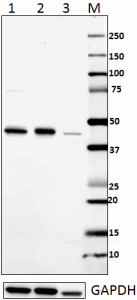
-

Total lysates (15 µg protein) from HeLa (lane 1), Molt-4 (lane 2) and NIH3T3 (lane 3) were resolved by electrophoresis (4-12% Bis-Tris gel), transferred to nitrocellulose, and probed with 1:500 diluted (1 µg/mL) purified anti-IRF1 antibody (upper). Proteins were visualized using an HRP goat anti-mouse-IgG secondary antibody (Cat. No. 405306) or HRP Donkey anti-rabbit IgG Antibody (Cat. No. 406401) for GAPDH and chemiluminescence detection. GAPDH (poly6314, Cat. No. 631401) antibody was used as a loading control (lower). Lane M: MW ladder. -

HeLa cells were fixed with 2% PFA for ten minutes, permeabilized with 0.5% Triton X-100 for five minutes, and blocked with 5% FBS for 30 minutes. Then the cells were intracellularly stained with 2 µg/mL anti-IRF1 Antibody (clone 13H3A44) followed by Alexa Fluor® 594 (red) conjugated goat anti-mouse IgG in blocking buffer for two hours at room temperature. Actin filaments were labeled with Alexa Fluor® 488 Phalloidin (green). Nuclei were counterstained with DAPI (blue). The image was captured with a 60X objective. -

Immunoprecipitation of IRF1 from Hela cells treated with human IFNg (100 ng/ml, 4 hr). Lane 1 is 5% input. Immunoprecipitation was performed using protein G resins only (lane 2), mouse IgG isotype control (lane 3), and anti-IRF1 antibody (clone 13H3A44, lane 4). Western blot was performed using anti-IRF1 antibody (clone 13H3A44).
| Cat # | Size | Price | Quantity Check Availability | Save | ||
|---|---|---|---|---|---|---|
| 657602 | 100 µg | 212€ | ||||
IRF1 is the first identified member of the interferon regulatory transcription factor family. Its expression is induced in response to pathogen infection or the stimulation of several cytokines, including type I and II IFN, IL-1, IL-6, and TNF-α. Upon stimulation, IRF1 is transcriptionally activated by STAT1 and NFκB transcription factors via the GAS (interferon-gamma-activated sequence) element in the IRF1 promoter. IRF1 plays important roles in mediating immune response during infection and development of T cells and NK cells. In addition to the immunomodulatory functions, IRF1 has also shown to be involved in the regulation of cell cycle progression, tumor suppression, and apoptosis. IRF1-mediated transcription can be repressed by IRF2 through competing for the same binding region on the promoters.
Product DetailsProduct Details
- Verified Reactivity
- Human, Mouse
- Antibody Type
- Monoclonal
- Host Species
- Mouse
- Immunogen
- Partial human IRF1 recombinant protein (147-325 a.a.)
- Formulation
- This antibody is provided in phosphate-buffered solution, pH 7.2, containing 0.09% sodium azide.
- Preparation
- Affinity purified.
- Concentration
- 0.5 mg/mL
- Storage & Handling
- Upon receipt, store undiluted at 4°C.
- Application
-
WB - Quality tested
ICC, IP - Verified - Recommended Usage
-
Each lot of this antibody is quality control tested by Western blotting. For Western blotting, the suggested use of this reagent is 0.5 - 2.0 µg per mL. For immunoprecipitation, the suggested use of this reagent is 2.0 - 10 μg per mL. It is recommended that the reagent be titrated for optimal performance for each application.
- Product Citations
-
- RRID
-
AB_2562631 (BioLegend Cat. No. 657602)
Antigen Details
- Structure
- 325 amino acids, predicted Mw is 37 kD and observed MW is 45kD. Contains an IRF tryptophan pentad repeat responsible for DNA binding.
- Distribution
-
Nucleus.
- Function
- IRF1 is a transcription factor, regulating expression of IFN and IFN-inducible genes. It is also involved in regulating cell proliferation, apoptosis, tumor suppression, and various immune responses.
- Interaction
- Forms homodimers. Interacts with p300, MyD88, and PIAS3.
- Biology Area
- Apoptosis/Tumor Suppressors/Cell Death, Cell Biology, Cell Cycle/DNA Replication, Immunology, Innate Immunity, Transcription Factors
- Antigen References
-
1. Yang W, et al. 2012. PLoS One 7:e50932.
2. Schwartz JL, et al. 2011. Int. J. Breast Cancer. 2011:912102.
3. Horiuchi M, et al. 2011. J. Neuroinflammation. 8:8.
4. Frontini M, et al. 2009. Nucleic Acids Res. 37:1073.
5. Yarilina A, et al. 2008. Nat. Immunol. 9:378.
6. Kano S, et al. 2008. Nat. Immunol. 9:34. - Gene ID
- 3659 View all products for this Gene ID
- UniProt
- View information about IRF1 on UniProt.org
Related FAQs
Other Formats
View All IRF1 Reagents Request Custom Conjugation| Description | Clone | Applications |
|---|---|---|
| Purified anti-IRF1 | 13H3A44 | WB,ICC,IP |
Customers Also Purchased
Compare Data Across All Formats
This data display is provided for general comparisons between formats.
Your actual data may vary due to variations in samples, target cells, instruments and their settings, staining conditions, and other factors.
If you need assistance with selecting the best format contact our expert technical support team.
 Login / Register
Login / Register 




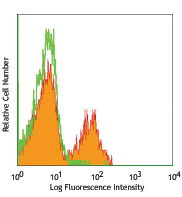
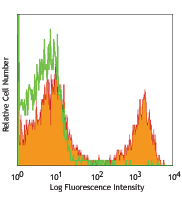
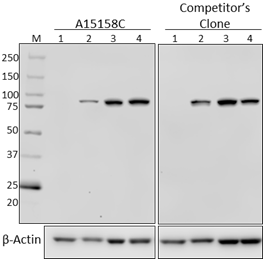
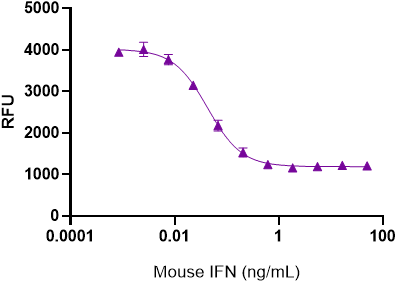

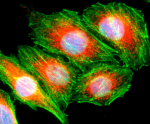
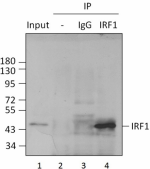



Follow Us